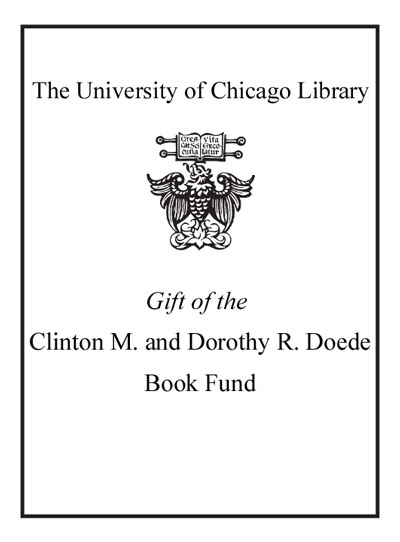Kinship, population and social reproduction in the 'new Indonesia' : a study of Nuaulu cultural resilience /
Saved in:
| Author / Creator: | Ellen, R. F., 1947- author. |
|---|---|
| Imprint: | Abingdon, Oxon ; New York, NY : Routledge, Taylor & Francis Group, 2018. ©2018 |
| Description: | xiv, 220 pages ; 25 cm. |
| Language: | English |
| Series: | The modern anthropology of Southeast Asia Modern anthropology of South-East Asia. |
| Subject: | |
| Format: | Print Book |
| URL for this record: | http://pi.lib.uchicago.edu/1001/cat/bib/11801836 |
MARC
| LEADER | 00000cam a2200000 i 4500 | ||
|---|---|---|---|
| 001 | 11801836 | ||
| 005 | 20180705145650.7 | ||
| 008 | 180124t20182018enk b 001 0 eng c | ||
| 003 | ICU | ||
| 010 | |a 2018003460 | ||
| 040 | |a NIC/DLC |b eng |e rda |c DLC |d OCLCF |d OCLCO |d YDX | ||
| 020 | |a 9781138493872 |q hardcover | ||
| 020 | |a 1138493872 |q hardcover | ||
| 020 | |z 9781351027144 |q electronic book | ||
| 035 | |a (OCoLC)1020621153 | ||
| 042 | |a pcc | ||
| 043 | |a a-io--- | ||
| 050 | 0 | 0 | |a DS632.N83 |b E435 2018 |
| 082 | 0 | 0 | |a 305.899/22 |2 23 |
| 100 | 1 | |a Ellen, R. F., |d 1947- |e author. |0 http://id.loc.gov/authorities/names/n79101440 | |
| 245 | 1 | 0 | |a Kinship, population and social reproduction in the 'new Indonesia' : |b a study of Nuaulu cultural resilience / |c Roy Ellen. |
| 264 | 1 | |a Abingdon, Oxon ; |a New York, NY : |b Routledge, Taylor & Francis Group, |c 2018. | |
| 264 | 4 | |c ©2018 | |
| 300 | |a xiv, 220 pages ; |c 25 cm. | ||
| 336 | |a text |b txt |2 rdacontent |0 http://id.loc.gov/vocabulary/contentTypes/txt | ||
| 337 | |a unmediated |b n |2 rdamedia |0 http://id.loc.gov/vocabulary/mediaTypes/n | ||
| 338 | |a volume |b nc |2 rdacarrier |0 http://id.loc.gov/vocabulary/carriers/nc | ||
| 490 | 1 | |a The modern anthropology of Southeast Asia | |
| 504 | |a Includes bibliographical references and index. | ||
| 505 | 0 | |a Clans, history and the emergence of the Nuaulu ethnos -- Descent, duality and gender -- Houses, networks and the practices of kinship -- Language and the social cognition of relationality -- Marriage 1 : exchange, process and transaction -- Marriage 2 : matrilaterality, bilaterality and alliance -- Rules, contravention and enforcement -- Demography, change and social reproduction. | |
| 520 | |a "Nuaulu people on the Indonesian island of Seram have displayed remarkable linguistic and cultural resilience over a period of 50 years. In 1970 their language and traditional culture was widely considered 'endangered.' Despite this, Nuaulu have not only maintained their animist identity and shown a robust ability to reproduce 'traditional' ritual performances, but have exhibited both population growth and increasing assertiveness in the projection of their interests through the politics of the 'New Indonesia'. This book examines how kinship organization and marriage patterns have responded to some of these challenges, and suggests that the retention of core institutions of descent and exchange are the consequence of population growth, which in turn has enabled ritual reproduction, and thereby effectively maintained a distinct identity in relation to the surrounding majority culture. Low conversion rates to other religions, and the political consequences of Indonesian 'reformasi' have also contributed to a situation in which despite changes in the material basis of their lives, Nuaulu have projected a strong independent identity and organisation. In terms of debates around kinship in eastern Indonesia, this book argues that older notions of prescriptive social structure are fundamentally flawed. Kinship institutions are real enough, but the distinction between genealogical and classificatory relations is often unimportant; all that matters in the end is that the arrangements entered into between clans and houses permit both biological and social reproduction, and that the latter ultimately serves the former"-- |c Provided by publisher. | ||
| 650 | 0 | |a Nuaulu (Indonesian people) |x Kinship. | |
| 650 | 0 | |a Kinship |z Indonesia |z Ceram Island. | |
| 650 | 0 | |a Nuaulu (Indonesian people) |x Rites and ceremonies. | |
| 651 | 0 | |a Ceram Island (Indonesia) |x Social life and customs. | |
| 650 | 7 | |a Kinship. |2 fast |0 http://id.worldcat.org/fast/fst00987769 | |
| 650 | 7 | |a Manners and customs. |2 fast |0 http://id.worldcat.org/fast/fst01007815 | |
| 651 | 7 | |a Indonesia |z Ceram Island. |2 fast |0 http://id.worldcat.org/fast/fst01244567 | |
| 830 | 0 | |a Modern anthropology of South-East Asia. |0 http://id.loc.gov/authorities/names/no2003024578 | |
| 903 | |a HeVa | ||
| 929 | |a cat | ||
| 999 | |n 514-0 |c JRL |r 170 | ||
| 999 | f | f | |i 092abc65-c286-584a-aa1e-3267c88a61c4 |s 34c2b13f-4428-52b0-8c21-fa3bd41bf284 |
| 928 | |t Library of Congress classification |a DS632.N83 E435 2018 |l ASR |c ASR-JRLASR |i 11258918 | ||
| 927 | |t Library of Congress classification |a DS632.N83 E435 2018 |l ASR |c ASR-JRLASR |e DOED |b 116088075 |i 10094102 | ||

